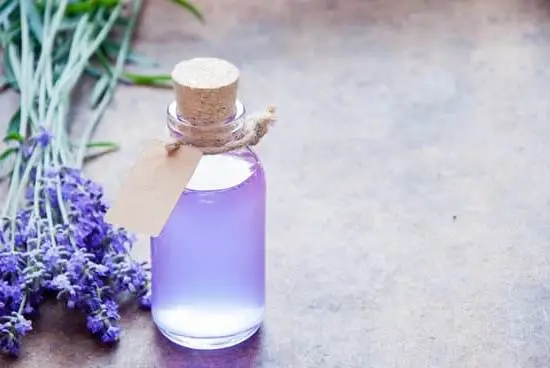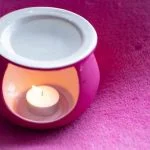Frankincense has long been used in aromatherapy for its numerous benefits. In this article, we will explore the various uses of frankincense in this practice and how it can enhance your overall well-being. Aromatherapy is a holistic approach to health and wellness that involves the use of essential oils to promote physical and mental balance. Frankincense, with its rich history and therapeutic properties, has become a staple in this field.
The purpose of this blog post is to inform readers about the specific benefits of using frankincense in aromatherapy and provide guidance on how to incorporate it into their daily routines. By understanding the historical significance of frankincense and its role in ancient civilizations, we can appreciate its value in modern-day aromatherapy practices. We will also delve into what aromatherapy is, its methods of application, and the myriad benefits it provides for both mind and body.
When it comes to frankincense in aromatherapy, there are different forms that can be used – incense and essential oil. Each form offers unique benefits and is utilized differently. We will explore these distinctions and help you understand how to best harness the power of frankincense for your own well-being. Throughout this article, we will also provide scientific evidence, research findings, popular blends, recipes, and tips on safe usage for your reference.
By the end of this article, you will have a comprehensive understanding of why frankincense is an important tool in aromatherapy. We hope that you will be inspired to incorporate frankincense into your own wellness routine and experience the transformative effects it can have on your physical and mental health. So join us as we embark on a journey through the world of frankincense in aromatherapy.
History of Frankincense
Frankincense, derived from the resin of the Boswellia tree, has a rich history that stretches back thousands of years. This section will delve into the origins and historical significance of frankincense, exploring how it was used in ancient civilizations such as Egypt and Mesopotamia. Valued for its aromatic properties and believed to have spiritual benefits, frankincense holds a special place in the world of aromatherapy.
Ancient civilizations recognized the value of frankincense and incorporated it into their daily lives in various ways. In Egypt, it was commonly used in religious rituals and embalming practices. Egyptians believed that burning frankincense helped to purify the air and ward off evil spirits. It was also used as an offering to gods and goddesses.
In Mesopotamia, present-day Iraq, frankincense held immense value and was often considered more precious than gold. It was used in religious ceremonies and offerings to deities as a way to honor them. The Babylonians even offered frankincense to their kings as a sign of respect and recognition.
It is not just these two ancient civilizations that held high regard for frankincense; numerous other cultures throughout history have utilized it for its therapeutic properties. From Greek medicine where it was used for its expectorant qualities to Chinese medicine where it helped promote healthy digestion, frankincense has played a significant role in traditional healing practices worldwide.
| Ancient Civilization | Use of Frankincense |
|---|---|
| Egypt | Religious rituals, embalming practices |
| Mesopotamia | Rituals, deity offerings, gifts to kings |
| Greek Medicine | Expectorant properties |
| Chinese Medicine | Promotion of healthy digestion |
The historical significance of frankincense and its long-standing presence in different cultures highlight its enduring popularity in aromatherapy today. By understanding its origins, we can better appreciate the value and benefits that frankincense brings to this ancient art of healing through scent.
What is Aromatherapy?
What is Aromatherapy?
Aromatherapy is a holistic practice that utilizes essential oils to promote physical and mental well-being. Derived from natural plant sources, these concentrated oils are known for their aromatic properties and therapeutic benefits. Aromatherapy can be incorporated into daily life through various methods of application, including inhalation, topical use, and diffusion.
The Benefits of Aromatherapy
Incorporating aromatherapy into your daily routine can provide a wide range of benefits for both the body and mind. The scent molecules in essential oils have the ability to stimulate the limbic system, which is responsible for emotions, memories, and behaviors. By inhaling essential oils, you can influence your mood and promote relaxation, stress relief, or even increased focus.
Topical applications of essential oils can also have powerful effects on the body. When diluted properly with carrier oils such as almond or coconut oil, essential oils can be applied directly to the skin for targeted benefits. For example, lavender oil is commonly used as a natural remedy for insomnia or anxiety when massaged onto the temples or wrists.
Another popular method of incorporating aromatherapy into daily life is through diffusion. This involves adding a few drops of essential oil to a diffuser with water and allowing it to disperse throughout a room. Diffusion not only infuses the space with pleasant scents but also disperses the therapeutic properties of the oils into the air to improve air quality and aid in respiratory health.
Methods of Application
There are several methods of applying essential oils in aromatherapy:
- Inhalation: Inhaling essential oils by using a diffuser or placing a few drops onto a tissue can provide immediate effects on mood and emotional well-being.
- Topical Use: Diluting essential oils with a carrier oil before applying them on the skin allows for targeted benefits. Common areas of application include temples, neck, wrists, or the soles of feet.
- Bathing: Adding a few drops of essential oil to a warm bath can create a relaxing and therapeutic experience while benefiting the skin.
- Massage: Incorporating essential oils into massage oils not only enhances the sensory experience but also provides localized and overall wellness benefits.
Incense vs. Essential Oil
Incense: Traditional and Ritualistic
One of the forms in which frankincense is used in aromatherapy is incense. Incense has been an integral part of religious and spiritual rituals for centuries, and its use can be traced back to ancient civilizations such as Egypt and Mesopotamia. In aromatherapy, incense is typically made from dried resin or powdered frankincense, mixed with other aromatic substances and herbs.
The process of burning incense involves lighting a charcoal disc or a dedicated incense stick, then placing small pieces or granules of frankincense on top. As the frankincense burns, it releases fragrant smoke that fills the room with its distinct aroma. This method creates a calming and meditative atmosphere, making it ideal for relaxation and spiritual practices such as meditation or prayer.
Using frankincense incense in aromatherapy offers several benefits. The aroma helps reduce stress and anxiety, promotes mental clarity and focus, and enhances the overall ambiance of a space. It can also be used to purify the air and create a sense of sacredness during rituals or ceremonies.
Essential Oil: Versatile and Convenient
Another popular form of using frankincense in aromatherapy is through essential oil. Frankincense essential oil is derived from the resin of the Boswellia tree through a process called steam distillation. This results in a highly concentrated liquid that captures the beneficial compounds found in frankincense.
Frankincense essential oil is versatile in its application methods. It can be diffused in a diffuser, diluted with carrier oils for topical use, or added to bathwater for an aromatic bathing experience. The essential oil can also be used directly by inhaling it from the bottle or applying a few drops to pulse points for immediate effect.
In aromatherapy, frankincense essential oil offers numerous benefits. It is known for its ability to reduce inflammation, alleviate symptoms of anxiety and depression, promote relaxation, and support respiratory health. Its versatile nature makes it a valuable addition to many aromatherapy blends and recipes.
Choosing the Right Form
When deciding between frankincense incense and essential oil for aromatherapy, it ultimately comes down to personal preference and desired effects. Some individuals may find the act of burning incense more ritualistic and soothing, while others may prefer the convenience and versatility of essential oils.
Furthermore, different forms of frankincense may offer slightly varying benefits due to the way they are utilized. Incense primarily affects the atmosphere in a room, creating a sense of calm and spirituality. On the other hand, essential oil directly interacts with the body through inhalation or topical application, delivering its therapeutic properties more effectively.
Regardless of which form is chosen, both frankincense incense and essential oil can enhance your aromatherapy practice by promoting relaxation, mental clarity, and overall well-being. Experimenting with different methods will allow you to discover which form resonates best with your individual needs and preferences.
The Benefits of Frankincense in Aromatherapy
Frankincense has long been cherished for its numerous benefits in aromatherapy. When it comes to promoting both physical and mental well-being, this essential oil is a powerful tool. One of the key benefits of using frankincense in aromatherapy is its ability to alleviate stress. Its calming properties help to reduce anxiety and promote a sense of peace and tranquility. Inhaling the aroma of frankincense can have a soothing effect on the mind, allowing individuals to relax and unwind.
In addition to stress relief, frankincense is also known for its anti-inflammatory properties. This makes it particularly effective in reducing inflammation in the body, which can contribute to various health issues such as joint pain or skin conditions. Regular use of frankincense oil in aromatherapy can help to soothe inflammation and support overall wellness.
Moreover, frankincense is highly valued for its ability to enhance meditation practices. Its earthy and grounding scent promotes a sense of focus and deepens mindfulness during meditation sessions. The use of frankincense in aromatherapy can create an optimal environment for relaxation, helping practitioners achieve a deeper level of connection with their inner selves.
Aside from these mental benefits, frankincense also plays a role in aiding respiratory health. The aromatic compounds present in frankincense have expectorant properties that help clear congestion in the respiratory tract. By diffusing or inhaling frankincense oil, individuals can experience relief from coughs, colds, bronchitis, asthma symptoms, and other respiratory issues.
Overall, the benefits of using frankincense in aromatherapy are plentiful. From stress reduction to enhancing meditation practices and supporting respiratory health, this essential oil proves to be invaluable in promoting holistic well-being.
| Benefits | Description |
|---|---|
| Alleviates Stress | The calming properties of frankincense promote relaxation and reduce anxiety. |
| Reduces Inflammation | Frankincense has anti-inflammatory properties that help soothe inflammation in the body. |
| Enhances Meditation | Frankincense’s grounding scent enhances focus and deepens mindfulness during meditation practices. |
| Promotes Relaxation | Inhaling frankincense can create a calming environment and promote a sense of peace and tranquility. |
| Aids in Respiratory Health | The expectorant properties of frankincense help clear congestion and relieve respiratory issues. |
How to Use Frankincense in Aromatherapy
Frankincense is a versatile essential oil that can be incorporated into your aromatherapy routine in several ways. Here is a step-by-step guide on how to use frankincense effectively:
- Diffusion: One of the most popular methods of using frankincense in aromatherapy is through diffusion. Add a few drops of frankincense essential oil to a diffuser filled with water and allow the aroma to disperse throughout the room. This method creates a calming and peaceful atmosphere, perfect for promoting relaxation or meditation. Make sure to follow the manufacturer’s instructions for your specific diffuser.
- Topical application: To use frankincense topically, dilute it with a carrier oil such as sweet almond oil or coconut oil. For every 1-2 drops of frankincense essential oil, add 1 teaspoon of carrier oil. Apply this mixture to your skin by massaging it gently onto desired areas such as the temples, wrists, or bottoms of feet. Topical application allows for direct absorption into the body and can help with stress relief or respiratory health.
- Inhalation: Another method of incorporating frankincense into your aromatherapy routine is inhalation. You can inhale the aroma directly from the bottle by taking deep breaths or place a few drops on a tissue or cotton ball and hold it close to your nose. Inhaling frankincense can provide instant relief from congestion or help with focus during meditation.
Tips and Precautions:
- Store your frankincense essential oil in dark glass bottles away from direct sunlight to maintain its quality.
- When diffusing frankincense, start with a small amount of oil and gradually increase the number of drops based on your preference and the size of your space.
- Always dilute frankincense with a carrier oil before applying it to your skin to prevent any potential sensitivity or irritation. Conduct a patch test on a small area of skin before widespread use.
- Consult with a healthcare professional if you are pregnant, nursing, or have any underlying health conditions before using frankincense.
Incorporating frankincense into your aromatherapy routine can bring numerous benefits to your physical and mental well-being. Understanding the various methods of diffusion, topical application, and inhalation will help you make the most out of this versatile essential oil. Remember to follow these tips and precautions for safe and effective usage.
Research and Studies
Frankincense has been a subject of scientific research for its potential therapeutic benefits in aromatherapy. Numerous studies have explored its effects on various physical and mental health conditions, providing evidence for its efficacy. Clinical trials have demonstrated the positive impact of frankincense on specific conditions, as well as its overall contribution to well-being.
One study published in the Journal of Complementary Medicine examined the effect of frankincense essential oil inhalation on anxiety levels among patients undergoing colonoscopy. The results showed that participants who received frankincense inhalation experienced significantly reduced anxiety compared to those who did not receive the intervention. This suggests that frankincense can have an anxiolytic effect when used in aromatherapy.
Furthermore, another study conducted at the University of Manchester found that frankincense essential oil possesses anti-inflammatory properties. The researchers investigated the impact of Frankincense oil on a type of white blood cell called leukocytes, which play a crucial role in immune response and inflammation. The findings revealed that certain compounds present in frankincense oil were able to suppress inflammatory responses effectively.
In addition to these individual studies, systematic reviews and meta-analyses have also contributed to our understanding of frankincense’s benefits in aromatherapy. A 2018 review published in Evidence-Based Complementary and Alternative Medicine examined multiple studies on different essential oils, including Frankincense. The analysis concluded that inhalation or topical application of Frankincense oil can reduce stress levels, boost mood, and improve overall well-being.
These research findings offer scientific support for the use of frankincense in aromatherapy practices. However, it is important to note that further research is still needed to fully understand the mechanisms behind its therapeutic effects and to explore its potential in other areas of health and wellness.
In the next section, we will delve into popular blends and recipes that incorporate frankincense in aromatherapy, providing readers with inspiration for creating their own customized blends to address specific needs and preferences.
Popular Blends and Recipes
Frankincense is a versatile essential oil that can be blended with other oils to create unique aromatherapy experiences. By combining it with complementary essential oils, you can enhance its therapeutic properties and create a personalized blend for specific purposes. Here are some popular frankincense blends and recipes in aromatherapy:
- Relaxation Blend: To promote relaxation and reduce stress, combine 3 drops of frankincense oil with 2 drops of lavender oil and 2 drops of chamomile oil. This blend has soothing properties that can help calm the mind and body after a long day. You can use this blend in a diffuser or add it to your bathwater for a relaxing soak.
- Meditation Blend: Frankincense is known for its ability to enhance spiritual experiences and deepen meditation practices. Create a meditation blend by combining 4 drops of frankincense oil with 3 drops of sandalwood oil and 2 drops of bergamot oil. This combination promotes focus, grounding, and clarity during meditation sessions.
- Respiratory Health Blend: Frankincense possesses anti-inflammatory properties that make it beneficial for respiratory health issues such as congestion or coughs. For a respiratory health blend, mix 4 drops of frankincense oil with 3 drops of eucalyptus oil and 2 drops of peppermint oil. This blend can be used in steam inhalations or diffused to clear the airways.
Remember to always dilute essential oils properly before using them on the skin, especially when creating topical blends. A carrier oil such as jojoba or coconut oil is recommended for dilution purposes.
By experimenting with different essential oil combinations, you can create blends that suit your specific needs and preferences. Whether you’re seeking relaxation, meditation support, or respiratory relief, incorporating frankincense into your aromatherapy routine can enhance the therapeutic benefits and elevate your overall well-being.
Conclusion
In conclusion, frankincense plays a significant role in aromatherapy due to its many benefits and historical significance. Throughout history, it has been valued by ancient civilizations like Egypt and Mesopotamia for its therapeutic properties. In the practice of aromatherapy, frankincense offers numerous advantages, including stress alleviation, inflammation reduction, enhanced meditation experience, relaxation promotion, and respiratory health improvement.
To incorporate frankincense into an aromatherapy routine, there are several methods available. Diffusion, topical application, and inhalation can all be used to enjoy the benefits of this essential oil. However, it is important to follow proper guidelines for safe and effective usage. Precautions should be taken to ensure the oil is diluted when applied topically and that diffusion is done in well-ventilated areas.
Scientific research and studies further support the use of frankincense in aromatherapy. Clinical trials have shown its effectiveness in treating specific conditions as well as promoting overall well-being. It is encouraging to see that science aligns with the historical use and anecdotal evidence surrounding the use of frankincense.
Incorporating different essential oils along with frankincense can create customized blends for specific purposes. Popular combinations include lavender for relaxation or eucalyptus for respiratory health. The possibilities are endless when it comes to blending essential oils in aromatherapy.
Frequently Asked Questions
What are the five benefits of frankincense?
Frankincense offers several benefits, the first being its potential anti-inflammatory properties. It contains compounds that may reduce inflammation in the body, helping to alleviate symptoms associated with conditions like arthritis or inflammatory bowel disease. Secondly, frankincense is believed to have antimicrobial properties, making it effective against certain bacteria and fungi. This makes it a useful natural remedy for fighting infections.
Additionally, frankincense has been used for centuries as a traditional medicine for pain relief due to its analgesic properties. It may help soothe pain and discomfort associated with conditions like headaches or muscle soreness. Moreover, frankincense has been studied for its potential antidepressant effects, as some research suggests that it may positively impact mood and reduce symptoms of anxiety or depression. Lastly, frankincense is commonly used in skincare products due to its ability to promote healthy skin by reducing signs of aging and improving overall complexion.
What does smelling frankincense do for you?
Smelling frankincense can have soothing and calming effects on the mind and body. The aroma of this resin has been traditionally used in religious ceremonies and meditation practices for its ability to induce a sense of relaxation and mental clarity.
In aromatherapy, frankincense is often utilized for its grounding properties that can help reduce stress and anxiety levels while promoting emotional well-being. Inhaling the scent of frankincense is thought to stimulate the release of certain neurotransmitters in the brain that are associated with feelings of peace and tranquility.
What does frankincense oil do to the brain?
Frankincense oil is known to have several positive effects on the brain. Firstly, it may enhance cognitive functioning such as memory retention and focus due to its ability to stimulate oxygen flow within the brain. This improved circulation helps nourish brain cells and promotes optimal cognitive performance. Furthermore, studies suggest that frankincense oil may have neuroprotective properties by potentially aiding in the prevention of neurodegenerative diseases such as Alzheimer’s or Parkinson’s disease.
The oil’s anti-inflammatory properties may help reduce inflammation and oxidative stress in the brain, which are considered key factors in neurodegenerative conditions. Additionally, frankincense oil has been explored for its potential to alleviate symptoms of anxiety and depression. Its scent may impact the limbic system, a brain region responsible for emotions, and potentially induce feelings of relaxation and well-being. However, it’s important to note that further research is needed to fully understand the effects of frankincense oil on the brain.

Are you looking for a natural way to improve your health and wellbeing?
If so, aromatherapy may be the answer for you.





